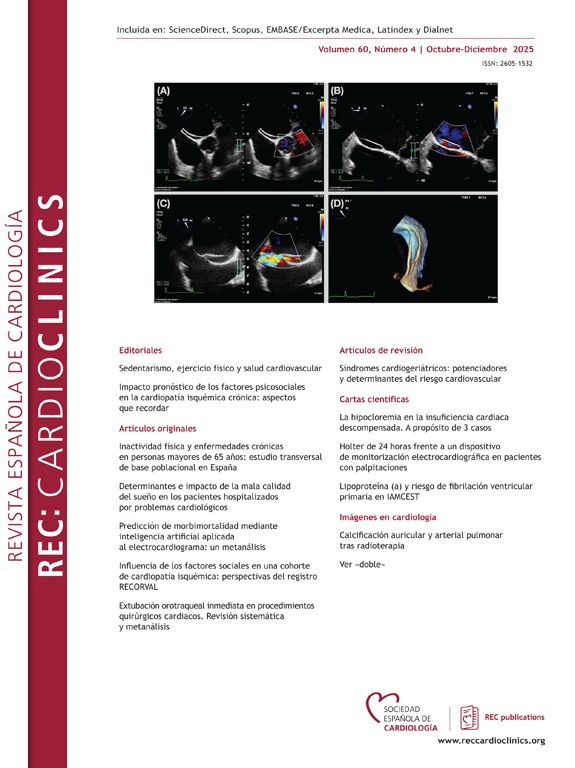A healthy 66-year-old man was evaluated because of an incidental finding of a type-1 (coved) Brugada electrocardiographic pattern (BrP) in the inferior leads and V2 (Fig. 1A). He reported unexplained syncope years ago, but no significant family history. A latter electrocardiogram did not show the initial findings. The transthoracic echocardiography, exercise test and noninvasive coronariography were normal. All causes of Brugada fenocopy were ruled out, and an early repolarization syndrome was discarded because the repolarization was abnormal in the inferior and precordial leads. An ajmaline test was performed: basal electrocardiogram presented a notched 0.5mm J wave in III and a discrete ST elevation in V2 placement in the 2nd–3rd intercostal space (is). The ajmaline unmasked a type-1 BrP in the inferior leads and a significant QRS prolongation was observed (Fig. 1B), but the test was considered inconclusive. During an electrophysiological study a sustained polymorphic ventricular tachycardia was induced. Finally, the patient was diagnosed with Brugada syndrome (BrS) and a cardioverter defibrillator was implanted.
BrS is diagnosed in presence of type-1 BrP in ≥1 leads among the V1–2 positioned in the 2nd–4th is, either spontaneously or after a drug test with sodium channel blockers. However, sporadic cases have been reported about an induced type-1 BrP in V1–2 and the infero-lateral leads or, exclusively, in the inferior leads. This reported case is the second with a spontaneous type-1 BrP in the inferior leads, and emphasizes that BrP/BrS might show very unusual fenotypes which, in addition, can be similar to other J wave syndromes.










